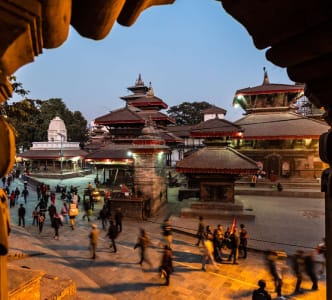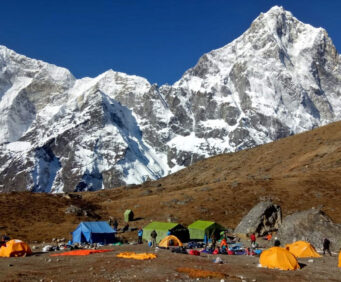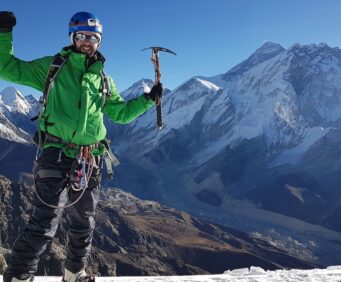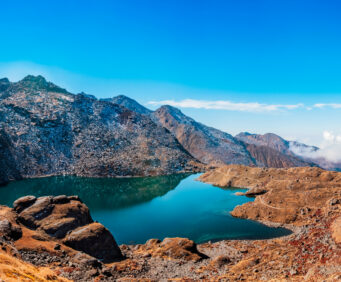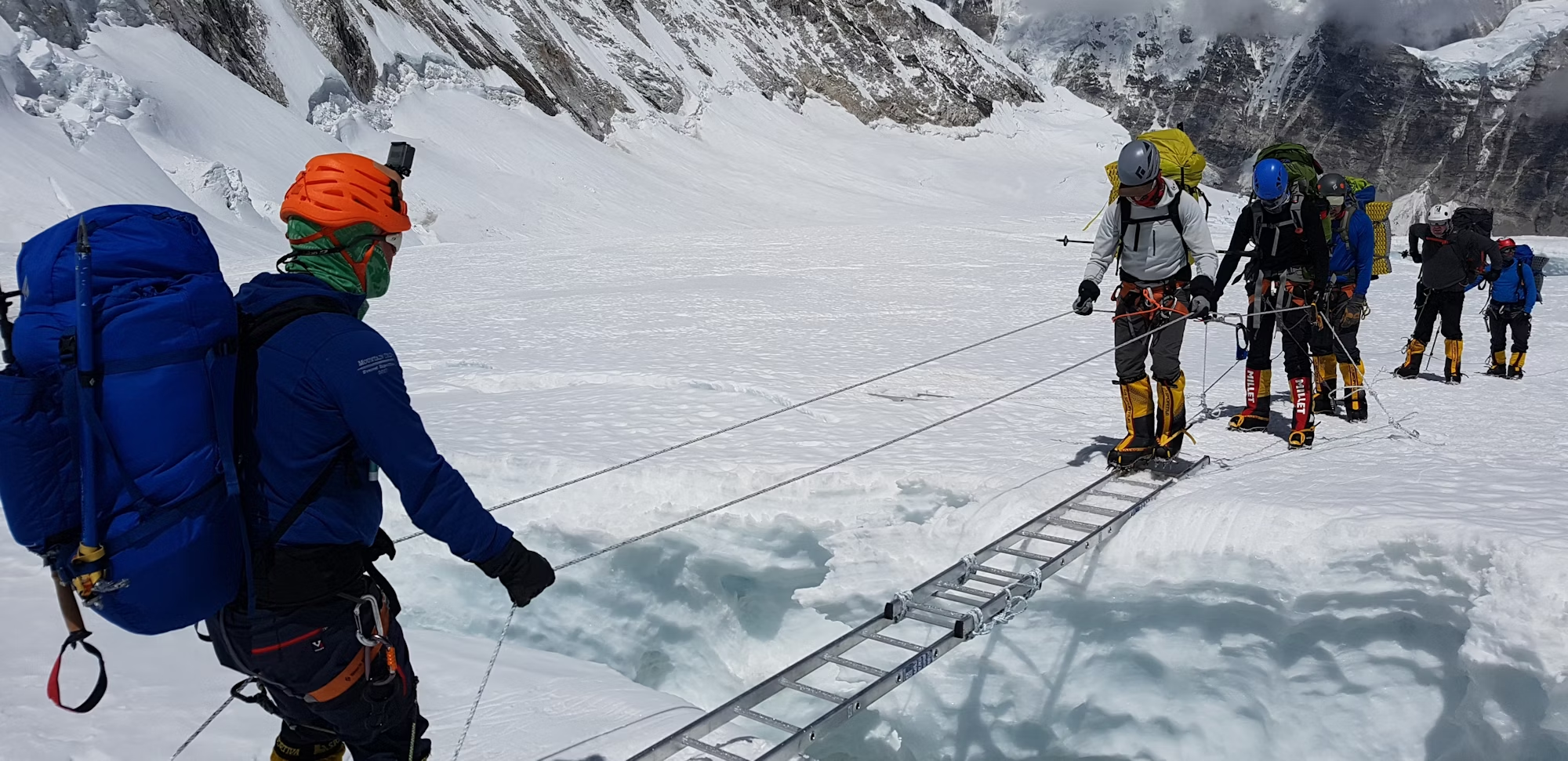
Khumbu Icefall: Guide to Everest’s Most Dangerous Passage
18th May, 2025 - Posted By: Himalayan AbodeThe Khumbu Icefall is the most infamous and formidable obstacle on the route to the summit of Mount Everest. Known for its breathtaking beauty and deadly unpredictability, this frozen labyrinth has become a rite of passage-and a source of dread-for every climber who attempts Everest’s South Col route.
This comprehensive guide explores the Khumbu Icefall’s geography, dangers, history, and the strategies climbers use to survive its ever-shifting maze.
What is the Khumbu Icefall?
The Khumbu Icefall is a massive, constantly moving section of the Khumbu Glacier, located on the southern slopes of Mount Everest in Nepal. It sits between Everest Base Camp (EBC) and Camp I, marking the first-and often most dangerous-major challenge for climbers heading up the mountain.
The Icefall is characterized by towering seracs (ice towers), deep crevasses, and unstable ice formations that shift daily as the glacier flows down the mountain.
Elevation:
Begins around 5,364 meters (17,600 feet) at Base Camp and rises to about 5,900 meters (19,500 feet) at its highest point.
Length:
Stretches approximately 2 kilometers (1.24 miles) from Base Camp to Camp I.
Movement:
The glacier moves at a rate of 0.9 to 1.2 meters (3 to 4 feet) per day, causing the Icefall’s features to change constantly.
Geography and Formation
The Khumbu Icefall forms where the Khumbu Glacier tumbles over a steep cliff at the head of the Western Cwm, just above Everest’s South Base Camp.
This section of the glacier is the highest in the world, with elevations ranging from 4,900 meters (16,100 feet) at its terminus to 7,600 meters (24,900 feet) at its source. As the glacier descends, it fractures into a chaotic jumble of ice blocks, crevasses, and seracs, creating the Icefall’s notorious terrain.
Why is the Khumbu Icefall So Dangerous?
The Khumbu Icefall is widely regarded as the most perilous section of the Everest climb. Its dangers stem from several factors:
Unstable Seracs:
Towering ice blocks, sometimes as tall as 12-story buildings, can collapse without warning, crushing anything in their path.
Deep Crevasses:
Hidden fissures, some over 100 meters deep, are often concealed by fragile snow bridges that can give way under a climber’s weight.
Constant Movement:
The glacier’s rapid flow causes the terrain to shift unpredictably, opening new crevasses and toppling seracs daily.
Avalanches:
The risk of avalanches is ever-present, especially as the sun warms the ice and destabilizes the formations above.
Extreme Altitude and Cold:
The thin air and subzero temperatures increase the risk of altitude sickness, frostbite, and exhaustion.
Limited Escape:
If a collapse or avalanche occurs, there is little time or space to react, making survival largely a matter of luck and timing.
The Human Cost: Accidents and Fatalities
Since climbers first began attempting Everest via the South Col route in the 1950s, the Khumbu Icefall has claimed dozens of lives, the majority being Sherpa guides responsible for fixing ropes and ladders.
The most devastating incident occurred on April 18, 2014, when a massive serac collapse killed 16 Sherpas preparing the route for the climbing season. This tragedy highlighted the immense risks faced by those who work in the Icefall and led to calls for improved safety measures and better compensation for Sherpa families.
- Total fatalities: At least 47 people have died in the Khumbu Icefall between 1953 and 2023.
- Most common causes: Falling ice, avalanches, and falls into crevasses.
- Notable incidents: The 2014 avalanche remains the deadliest single event in the Icefall’s history, but smaller accidents occur almost every season.
Crossing the Khumbu Icefall: Techniques and Precautions
Surviving the Khumbu Icefall requires a combination of skill, experience, and strict adherence to safety protocols. Here’s how climbers approach this formidable obstacle:
1. Timing is Everything
- Climbers cross the Icefall before sunrise, when the cold temperatures keep the ice more stable and reduce the risk of collapses.
- As the sun rises, the warming ice becomes more prone to shifting, making afternoon crossings extremely hazardous.
2. Fixed Ropes and Ladders
- The route is equipped with fixed ropes and aluminum ladders, installed and maintained by the legendary “Icefall Doctors”-a specialized team of Sherpas.
- Ladders are lashed together to bridge wide crevasses, requiring climbers to balance carefully as they cross.
3. Speed and Efficiency
- Climbers are advised to move quickly but cautiously, minimizing the time spent in the Icefall to reduce exposure to danger.
- Stops are kept brief, and climbers always remain clipped to the safety ropes.
4. Teamwork and Communication
- Groups travel together, watching for signs of instability and assisting each other across the most treacherous sections.
- Sherpa guides lead the way, using their expertise to identify the safest route each day.
5. Acclimatization
- Proper acclimatization is essential to avoid altitude sickness, which can impair judgment and physical ability.
- Climbers often make several trips through the Icefall during the course of their expedition to adjust to the altitude.
The Role of Sherpas and the Icefall Doctors
Sherpa guides are the unsung heroes of Everest, risking their lives to prepare and maintain the route through the Khumbu Icefall. The Icefall Doctors are a select group tasked with installing ladders and ropes, constantly adjusting the route as the glacier shifts. Their expertise and bravery are critical to the safety of all climbers.
Before entering the Icefall, it is customary for climbers and Sherpas to participate in a Puja ceremony at Base Camp, seeking blessings for a safe passage.
Environmental and Climatic Challenges
The Khumbu Icefall’s dangers are exacerbated by the region’s harsh environment:
Temperature:
Early morning temperatures can drop below -20°C (-4°F), while daytime sun quickly warms the ice, increasing instability.
Weather:
Sudden storms, high winds, and heavy snowfall can further destabilize the Icefall and reduce visibility.
Climate Change:
Warming temperatures are accelerating glacier movement and increasing the frequency of avalanches and serac collapses.
Historical Significance and Climbing Milestones
The Khumbu Icefall has been a central feature of Everest expeditions since Sir Edmund Hillary and Tenzing Norgay first pioneered the South Col route in 1953. Every climber attempting Everest from the Nepali side must pass through this icy gauntlet, making it a defining experience of the climb.
Rite of Passage:
Successfully navigating the Icefall is seen as a key milestone for Everest climbers, symbolizing both the dangers and the allure of the world’s highest peak.
No Easy Alternatives:
There is no way to bypass the Icefall on the South Col route; all expeditions from Nepal must confront this challenge.
Frequently Asked Questions
How long does it take to cross the Khumbu Icefall?
- Most climbers take 3–6 hours, depending on conditions and experience. Sherpas can sometimes cross in as little as 2–3 hours.
Can you avoid the Khumbu Icefall?
- Not on the South Col route. Alternative routes exist on Everest’s north side (Tibet), but these come with their own challenges.
When is the best time to cross the Icefall?
- Early morning, before sunrise, when the ice is most stable. The climbing seasons are spring (March–May) and autumn (September–November).
Do you need a permit to enter the Khumbu Icefall?
- Yes, a climbing permit for Everest is required, and climbers must be at least 16 years old.
Khumbu Icefall in Numbers
| Feature | Detail |
|---|---|
| Elevation Range | 5,364 m (Base Camp) – 5,900 m (top) |
| Length | ~2 km (1.24 miles) |
| Glacier Movement | 0.9–1.2 m (3–4 ft) per day |
| Deepest Crevasse | Over 100 meters (328 feet) |
| Tallest Serac | Up to 12 stories high |
| Fatalities (1953–2023) | At least 47 |
| Deadliest Incident | 2014, 16 Sherpas killed |
Tips for a Safe Crossing
- Start before dawn to minimize exposure to shifting ice.
- Stay clipped to fixed ropes at all times.
- Move efficiently-don’t linger in hazardous areas.
- Trust your Sherpa guides and follow their instructions.
- Be prepared for extreme cold and altitude.
- Participate in the Puja ceremony for good luck and to honor local traditions.
Conclusion
The Khumbu Icefall is a place of both awe and terror-a frozen maze that tests the limits of human endurance, skill, and courage. Its shifting seracs and hidden crevasses have claimed many lives, but they have also inspired generations of climbers to push beyond their fears. For those who dream of standing atop of Everest, the Khumbu Icefall is the first-and most unforgettable-step on the journey to the world’s highest summit.
Recent Posts
